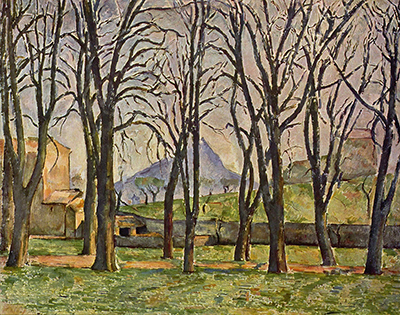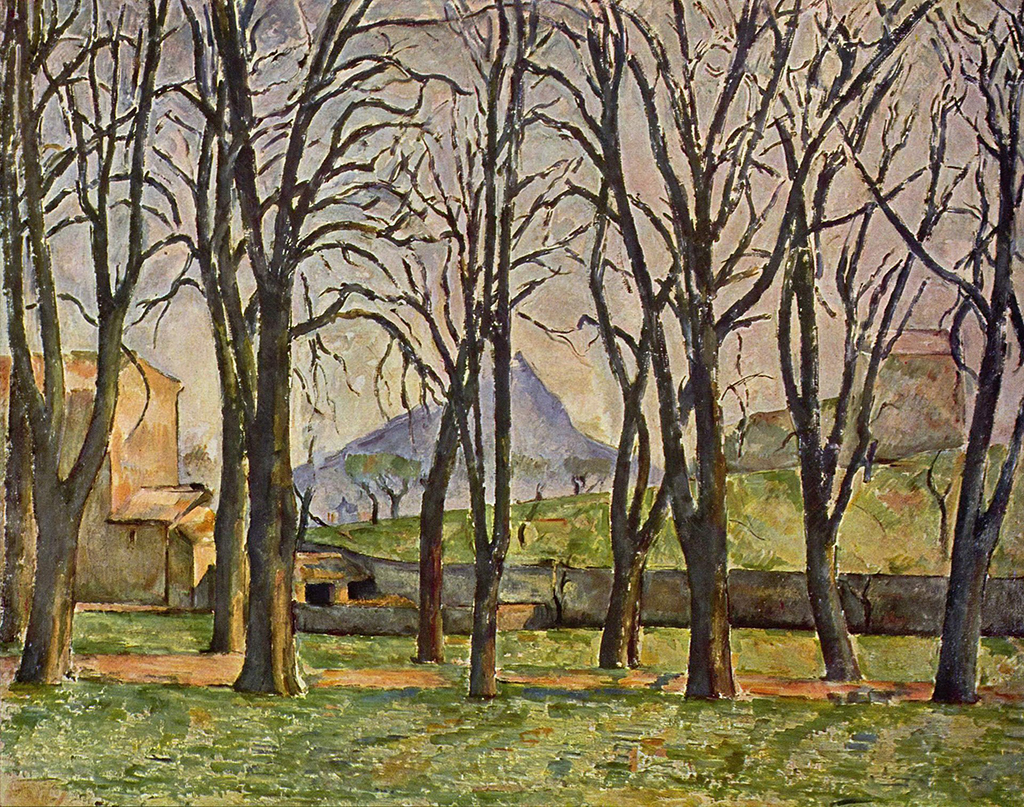Within this painting the artist displays one of his favourite parts of the Jas de Bouffan mansion, namely a row of horse chestnut trees which lined a footpath. The property was owned by his father for many years and helped inspire many artworks for this artist.
There were several parts of the property which he loved to spend time studying and relaxing. Besides this part of the garden, Cezanne also loved a small pond found close by plus also a number of statues which were dotted around the gardens. This stunning venue can still be visited today and is set up for fans of the artist to understand more about his life here. The accessible nature of this mansion allowed Cezanne to spent huge amounts of time studying items from different angles, across different seasons and at different times of the day. His own artistic style was particularly subtle and so he would have loved to learn more about these small variations over time. In a similar way to how Monet would work within his own garden, Cezanne felt relaxed and comfortable in this environment. He would work from easel indoors and out, moving his equipment around the gardens to capture anything that took his interest.
Cezanne worked from the alternative angle within L'Allée au Jas de Bouffan (The Driveway at the Jas de Bouffan) but here he takes on the row of trees from the side. The path is still visible, and allows us to locate ourselves within the same part of the garden. From this new angle we discover other elements of the view, though, such as some mountains in the far distance as well as some buildings to the left hand side. The trees within this artwork are devoid of leaves or nuts, suggesting a late autumn or winter setting. Despite this, Cezanne still saw beauty in these trees and presents them as is. He would go on to make many more artworks within this setting, both in oils and watercolours, and it can be said that the tones of green and blue used within this work are signature colours used by the artist in many of his most famous paintings, particularly his landscapes.
Chestnut Trees at Jas de Bouffan, circa 1885-1886, can now be found at the Minneapolis Institute of Art, USA, having been bequethed to them by a private collector. Their own detail on the piece underlines how Cezanne carefully planned the horizontal and vertical structure for this painting by placing himself within the garden at this particular angle. The two rows of trees almost merge together from this viewpoint, with the trunks emerging from approximately the same level. A small stone wall appears in the background and stretches across much of the scene, helping to provide a sense of perspective between the front and back of the work, further aided by the mountain which stands centrally in the far distance.





